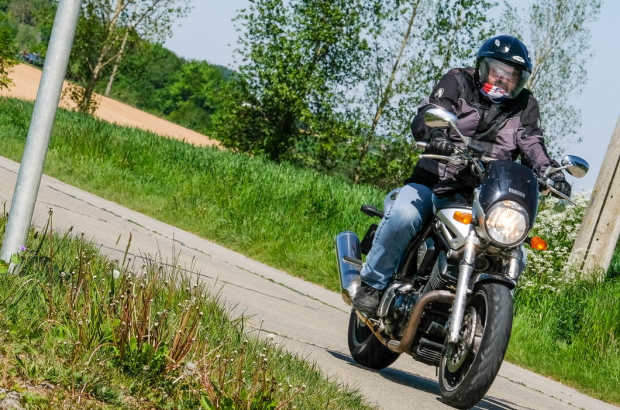- Daily & Weekly newsletters
- Buy & download The Bulletin
- Comment on our articles
Concerns remain as Belgium prepares to enforce technical checks on motorbikes
Braving the cold and rain, several hundred bikers gathered in Brussels on Saturday to protest against plans to introduce a roadworthiness test for motorcycles.
The bikers claim that the mandatory safety examination, which will come into force next year, is only designed to bring extra money into the state’s coffers. They say that bikers are keen enthusiasts who take care and maintain their machines to a rigorous standard.
The testing of motorcycles, a similar examination and documentation procedure to a car’s MOT, was decided upon at EU level nine years ago and the deadline for all countries to comply is 2022. Now, with time running out, Belgium is working to finalise the process in a way which satisfies the nation’s three regions.
According to the office of Walloon road safety minister Valérie De Bue, an agreement has been reached regarding how often the control should take place. Arguing that huge efforts in terms of road safety have been made, such as the requirement for bikers to wear appropriate clothing, Belgium has been excused from organising periodic technical checks, as is the case in many countries. Some require an annual visit, others every two years. In Belgium, this will not be the case, contrary to what some of the protesters claimed in Brussels at the weekend.
The check will only be mandatory during resale and after repairs following an accident. Thus, a motorcyclist who has never had an accident and hands over his motorcycle to a dealer when buying a new one should never be affected by the measure.
For everyone else who will have to get their motorcycle checked, however, there is still a lack of clarity over many aspects including cost and the exact nature of the examination, although many bikers assume that it will mainly be made up of checks to elements relating to safety and roadworthiness, such brakes, tires, suspension, chassis, headlights, etc.
The protestors on Saturday claim that accidents involving motorcycles are rarely caused by the condition of the bike itself. This is generally true. According to various studies, some quite dated, only 0.3% (the best case) to 6% (the worst case, relatively high by European standards) of accidents are directly attributable to the bike itself. This is not a high figure, but it is not insignificant either, as human lives are at stake regardless.
The belief that all bikers are lovers of their machines and tend to them religiously is also greatly exaggerated. The technical control will apply to motorcycles starting at 125cc, at least in the first year (discussions are under way to extend it to the lower categories, such as mopeds). Bikes with smaller cylinders are very popular at the moment as they provide more casual riders with an efficient means of mobility. With smaller motorbikes being more widely used among a demographic of riders who may not share the same obsessive passion of many of those with larger machines, it is possible that personal checks to tires, lights and brake pads are carried out less frequently.
One of the most obvious advantages of this technical control is that it will help to reassure a potential buyer. It is difficult for an uninitiated person to spot traces of falls, a slightly bent fork or a worn clutch. In the absence of official documentation, a buyer can only rely on the good faith of the seller and maybe any maintenance bills that have been kept. An official certificate provided by the control centres can then help.
However, while there are definite benefits of having official documentation, the final structure of the testing procedure and requirements remain unknown, which provides the basis for many of the grievances bikers have.
For example, what about modifications? Frequently, a motorcycle is accessorised; changes can be legion and can bring real added value in terms of comfort, visibility and even safety. But what is a matter of concern to many riders is the possible degree of tolerance that will be applied at the control centre. Will the bike have to be restored to its original condition? Will some aesthetic changes be allowed? Will the sound level be checked? Bikers have so many questions that still cannot be answered. Many maintain that it makes sense to authorise modifications that do not adversely affect safety and that do not alter the technical characteristics of the machine, something the authorities are contemplating.
The truth is, however, whether bikers like it or not, Belgium has no choice but to submit to European legislation and introduce the technical controls next year.



















